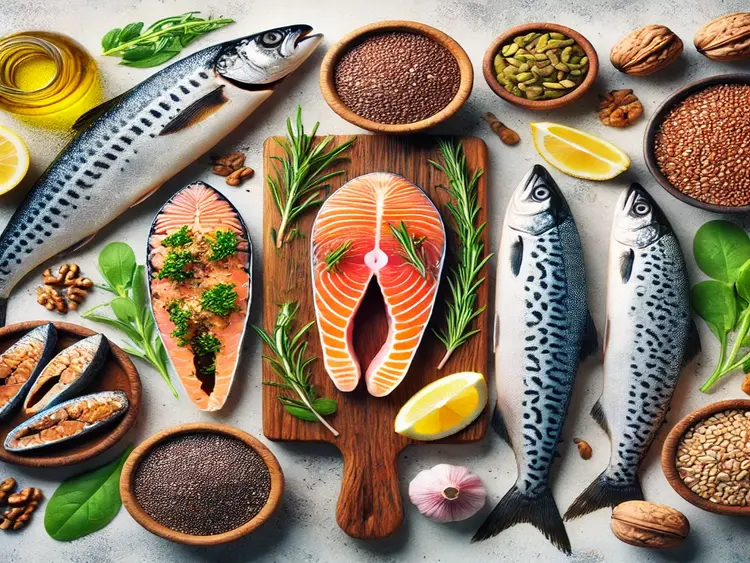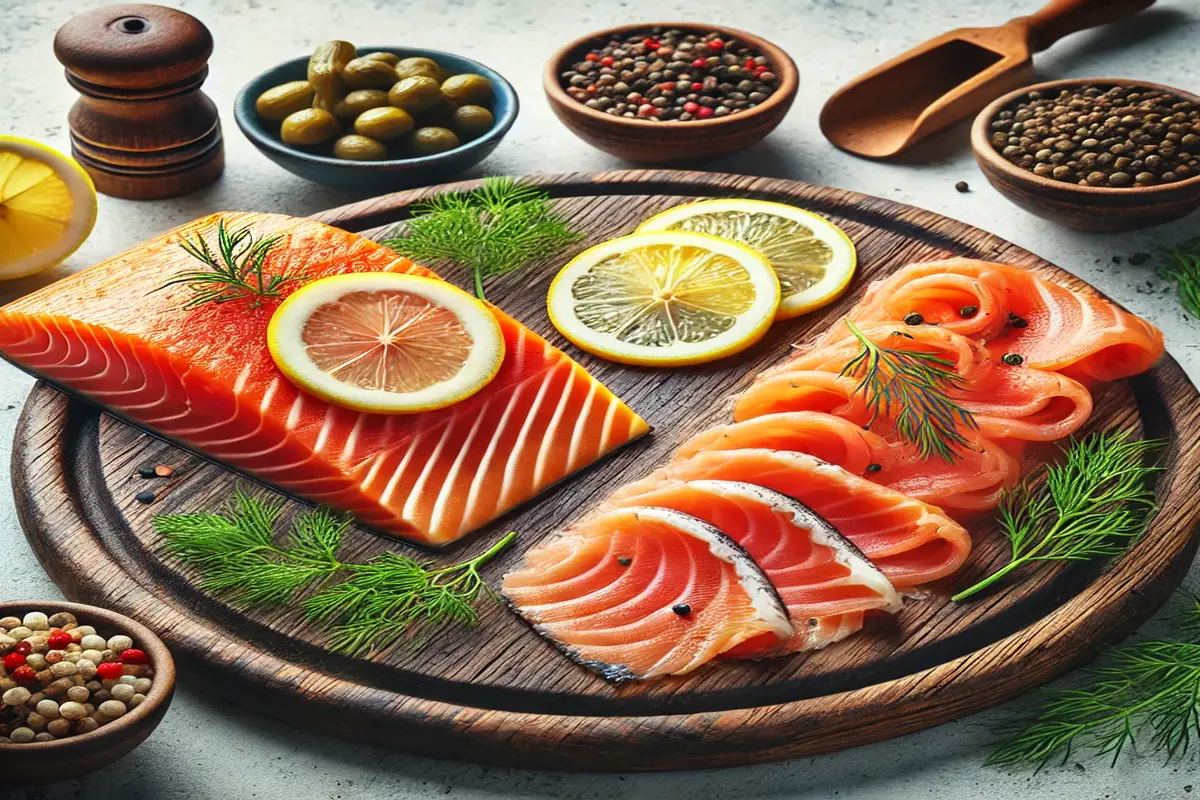Smoked salmon is a beloved delicacy enjoyed worldwide, but many ask: Is smoked salmon fully cooked? The answer depends on how the salmon is prepared—either through hot-smoking or cold-smoking. These methods significantly affect the texture, flavor, and, most importantly, the safety of the fish.
What is Smoked Salmon?
Smoked salmon undergoes curing and then smoking, which gives it a rich, smoky flavor. It comes in two main varieties: hot-smoked salmon and cold-smoked salmon. Understanding the differences between these methods is crucial when determining whether smoked salmon is fully cooked or still raw.
In the hot-smoking process, salmon is exposed to heat at temperatures of 150°F to 250°F, thoroughly cooking it and making it safe to eat. On the other hand, cold-smoking uses much lower temperatures, usually between 75°F and 90°F, which cures but doesn’t cook the fish. As a result, cold-smoked salmon remains raw, making proper storage and handling essential for safety.
To better understand smoking temperature guidelines, check out the USDA Guidelines on Safe Cooking Temperatures.
Hot-Smoked Salmon: Fully Cooked and Safe
Hot-smoked salmon cooks during the smoking process, making it safe to eat straight from the package. This method heats the fish at temperatures ranging from 150°F to 250°F, which fully cooks the salmon and gives it a flaky texture. Hot-smoked salmon works perfectly in salads, sandwiches, or as a stand-alone snack.
This thorough cooking eliminates harmful bacteria, like Listeria, often found in raw or undercooked fish. According to the FDA’s advice on seafood consumption, cooking fish to an internal temperature of 145°F ensures safety, making hot-smoked salmon a healthy and delicious choice.
For readers interested in processed food safety, explore the ingredients in McDonald’s Chicken Nugget Batter to see how food is prepared in fast-food chains.
Cold Salmon: Not Fully Cooked
Unlike its hot-smoked counterpart, cold-smoked salmon does not undergo cooking, as the smoking process only cures the fish at low temperatures. Cold-smoking typically uses temperatures between 75°F and 90°F, which keeps the salmon’s texture smooth and firm but leaves it raw. Though safe when properly handled, cold-smoked salmon presents higher risks, especially for pregnant women or individuals with weakened immune systems.
Cold-smoking focuses on flavor rather than cooking, giving cold-smoked salmon a more delicate taste. However, handling and storing cold-smoked salmon properly is crucial to prevent bacterial contamination. Store the fish at the appropriate temperatures and consume it within the recommended time frame to reduce risks.
To learn more about processed foods and safety, check out What Are the Coating on McDonald’s Chicken Nuggets?.
Is Smoked Salmon Safe to Eat Raw?
Cold-smoked salmon remains raw, though safe to eat when properly cured and stored. Eating raw or undercooked fish carries some risks, such as potential contamination with Listeria monocytogenes or parasites. The curing process reduces these risks, but it’s essential to ensure the fish has been handled and stored correctly.
Some people sear cold-smoked salmon briefly for added safety, especially when serving it to vulnerable individuals. For additional information on seafood safety recommendations, visit the FDA’s seafood consumption guide.
Curious about other processed foods? Learn more about ingredients in What Ingredients Do Chicken Nuggets Have?.
Nutritional Benefits of Smoked Salmon
Both hot-smoked and cold-smoked salmon provide numerous nutritional benefits. Smoked salmon is an excellent source of omega-3 fatty acids, essential for heart health and brain function. Additionally, smoked salmon delivers high-quality protein, vitamins B6 and B12, and important minerals like selenium.
- Omega-3 Fatty Acids: Support heart health, reduce inflammation, and improve brain function.
- High Protein Content: Offers a lean protein source for muscle maintenance and growth.
- Vitamins and Minerals: B12 supports brain function, while selenium boosts the immune system.
Those monitoring sodium intake should be cautious with cold-smoked salmon, which often contains higher sodium levels due to the curing process. For healthier food options, check out Perdue Chicken Nuggets: A Delicious and Nutritious Choice.
Alternatives to Smoked Salmon for a Balanced Diet

If you’re looking to diversify your seafood intake or avoid smoked salmon due to health concerns, several alternatives offer similar benefits. Grilled or baked salmon provides all the omega-3 fatty acids and protein without the risks associated with cold-smoked varieties. Cooking salmon fully eliminates pathogens while allowing for various seasonings like lemon, garlic, or herbs.
Other fish, such as mackerel, sardines, and trout, deliver similar nutrients and help meet your dietary needs. These fish are rich in omega-3 fatty acids and promote heart health while reducing the risks posed by raw seafood.
Plant-based options, like flaxseeds, chia seeds, and walnuts, also provide ALA (alpha-linolenic acid), which converts to omega-3. Including these foods alongside plant proteins can create a well-rounded diet for those avoiding smoked salmon or seafood.
How to Cook and Serve Salmon
Both hot-smoked and cold-smoked salmon work well in a variety of dishes. The cooked, flaky texture of hot-smoked salmon complements salads, pasta, and pizzas. The delicate taste of cold-smoked salmon makes it ideal for sandwiches, bagels with cream cheese, and wraps.
Some serving ideas:
- Breakfast: Add smoked salmon to scrambled eggs or omelets.
- Lunch: Create a smoked salmon wrap with cream cheese, dill, and cucumber.
- Dinner: Top a salad with hot-smoked salmon or stir it into pasta.
For more recipe ideas, check out Easy Homemade Chick-fil-A Nuggets Recipe.
Pairing Smoked with Healthy Sides
Pairing smoked salmon with nutrient-rich sides adds variety and balance to your meals. Fresh vegetables like spinach, arugula, and avocado enhance the dish’s flavor while adding important vitamins and fiber. These light, refreshing sides complement the rich, smoky taste of the salmon without overpowering it.
Whole grains like quinoa, brown rice, or whole wheat bread also make excellent accompaniments. They provide a hearty base for smoked salmon and offer additional fiber, keeping you full and satisfied longer. Combining these grains with salmon delivers a well-balanced meal packed with omega-3 fatty acids, protein, and complex carbohydrates.
If you’re looking for a lighter, low-carb option, consider pairing smoked salmon with zucchini noodles or a simple cucumber salad. These alternatives provide texture and crunch while keeping the meal light and healthy, perfect for those following low-carb or ketogenic diets.
Common Risks of Eating Smoked Salmon
Smoked salmon is safe for most people, but certain groups should exercise caution, particularly with cold-smoked salmon. This type of salmon presents a higher risk of Listeria contamination, which can harm pregnant women, older adults, or people with weakened immune systems.
To minimize risks:
- Always store smoked salmon in the refrigerator and consume it within the recommended time frame.
- Choose hot-smoked salmon if concerned about raw fish.
- Consult your healthcare provider if you have concerns about consuming cold-smoked salmon, especially during pregnancy.
Salmon for Special Dietary Needs
If you follow a gluten-free or low-sodium diet, selecting the right type of smoked salmon is essential. Hot-smoked salmon pairs well with gluten-free grains like quinoa or rice. Additionally, choosing low-sodium options helps maintain a balanced diet without exceeding daily sodium limits.
For those with lactose intolerance, enjoy smoked salmon with plant-based cream cheese alternatives. Options like almond or cashew cream cheese allow you to replicate classic dishes, such as smoked salmon bagels, without using dairy.
Smoked salmon also fits well into ketogenic or paleo diets, as it provides a healthy source of fats and protein without carbohydrates. Pair it with avocado, leafy greens, or olive oil for a nutritious, keto-friendly meal.
FAQs: Is Smoked Salmon Fully Cooked?
- Is all smoked salmon cooked?
- No, hot-smoked salmon is fully cooked, but cold-smoked salmon remains raw.
- Can I eat cold-smoked salmon without cooking it?
- Yes, but ensure proper storage to prevent bacterial contamination.
- How long does smoked salmon last in the fridge?
- Hot-smoked salmon lasts up to two weeks, while cold-smoked salmon should be consumed within one week of opening.
- Is smoked salmon safe for pregnant women?
- Pregnant women should avoid cold-smoked salmon due to Listeria risks, but hot-smoked salmon is safe.
- Can I reheat smoked salmon?
- Reheat hot-smoked salmon gently, but do not cook cold-smoked salmon, as it may lose its texture.
Best Ways to Store Smoked Salmon
To maintain the safety and quality of your smoked salmon:
- Store unopened vacuum-sealed smoked salmon in the refrigerator for up to two weeks.
- After opening, wrap the salmon tightly in plastic or foil, consuming it within five to seven days.
- For longer storage, freeze smoked salmon, where it lasts up to three months if wrapped tightly to prevent freezer burn.
Storing Smoked Salmon for Maximum Freshness
To keep smoked salmon fresh and safe, store it properly immediately after purchase. Place unopened, vacuum-sealed smoked salmon in the coldest part of the refrigerator, where it stays fresh for up to two weeks. Once opened, tightly wrap it in plastic wrap or aluminum foil to preserve its flavor and prevent air exposure. Ensure you consume opened smoked salmon within five to seven days for the best quality.
For long-term storage, freezing smoked salmon extends its shelf life to about three months. Wrap the salmon tightly in plastic wrap and then place it in a freezer-safe bag to prevent freezer burn. Thaw the salmon in the refrigerator overnight before serving to retain its texture and taste.
When preparing to serve, check the smell and texture. Fresh smoked salmon should have a mild, smoky aroma and firm, moist flesh. Discard any salmon that smells overly fishy or feels slimy to avoid potential foodborne illnesses.
Conclusion
Understanding the differences between hot-smoked and cold-smoked salmon is essential for making informed dietary decisions. Hot-smoked salmon provides a fully cooked, safe, and versatile option for various meals, making it easy to incorporate into a healthy diet. Whether you prefer it in salads, pasta, or as a stand-alone snack, its texture and rich flavor make it easy to incorporate into a healthy diet.
On the other hand, cold-smoked salmon delivers a delicate, raw option that pairs well with bagels, wraps, or light appetizers. However, due to its raw nature, it requires careful handling and storage, especially for individuals with higher risks like pregnant women or those with weakened immune systems. Always store cold-smoked salmon correctly and consume it within the recommended time frame to reduce potential health risks.
When choosing between these options, consider your health needs, personal taste, and how you plan to serve the salmon. Both varieties provide significant nutritional benefits, including high-quality protein and omega-3 fatty acids, which support heart health and cognitive function. By following the proper storage techniques and incorporating smoked salmon into balanced meals with nutrient-rich sides, you can enjoy this flavorful food safely and nutritiously.
Smoked salmon can be a flavorful addition to any diet when handled and stored correctly. Understanding its preparation methods, knowing how to cook and serve it, and taking steps to ensure freshness will allow you to enjoy its benefits while maintaining food safety.
